Regions of the Galaxy

The Galaxy we call home, one of trillions in the universe, is an enormous place that is over 100,000 lightyears across. Full of mysteries and secrets to uncover by people of brave hearts and curious minds, it is a stage of heroic events happening across 3.2 million habitable systems. Our galaxy has at least two companion galaxies; one of them is known as Rishi Maze. There is also an extension of the galaxy, known as Tingel Arm, located in the Outer Rim.
However, before you embark for a journey of your dreams, it would be wise to learn more about the regions of the galaxy and what to expect on your travels through them. There are nine primary regions of the galaxy, beginning at the center with the Deep Core and expanding outward like the rings of a tree.
Deep Core
Sometimes known as the Core of the Galaxy, the Deep Core is located in the heart of the galaxy itself and contains at its center the ancient, supermassive black hole that binds our galaxy together. This and its densely packed stars and planets made the Deep Core a dangerous place to travel prior to established hyperspace routes due to navigational circumstances hazardous enough to keep even the most intrepid explorers at a distance. The term coreward was utilized to refer to moving towards the Deep Core and away from the Rim.
Despite its dangers, the Deep Core houses worlds that hold great meaning to the galaxy. Some Jedi scholars believe Tython, for instance, to have been the site of one of the first Jedi temples. The Core of the Galaxy is also believed to be the home of a “Force planet” known as the Wellspring of Life. Inhabited by Force Priestesses and creations of the Living Force, this planet was visited by Grand Master Yoda in his quest for the secrets of immortality.
During the reign of Emperor Palpatine, the Galactic Empire developed Interdictor vessels for an area of the region they controlled known as the Deep Core Security Zone.
Though less is known of their history outside of legend, Byss and the Empress Teta system are also found on maps of the Deep Core.
Core Worlds
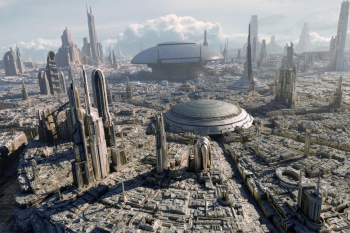
Neighbouring the Deep Core, the Core Worlds region was the hub of the most prestigious and wealthy worlds in the galaxy. These worlds include such notable planets as Coruscant, the throne world of the Old Republic and the Empire; Corellia, known for its shipbuilding industry; Alderaan, which was destroyed by the first Death Star; and Chandrila, the first capital of the New Republic and ultimately the site of the signing of the Galactic Concordance, the peace treaty marking the end of the Galactic Civil War between the Empire and the New Republic.
Those from the Core Worlds were largely disliked for their accent and snobby attitudes. Core Worlds were allowed to establish trade colonies and settle on new worlds, no matter the cost for the indigenous population – a fact that often led to the colonies being abused in order to deliver goods necessary for the wealthy worlds.
Hosnian System
The New Republic that was built on the ashes of the Empire decided that one of the ways to show the equality of all its worlds was to regularly change the headquarters of the New Republic Senate from one planet to another. During the war against the First Order in 34 ABY, the Hosnian system housed the Senate and was thus destroyed by the First Order with the use of the Starkiller super weapon, which turned the planet into a pocket nova in an event known as the Hosnian Cataclysm.
The Colonies
The Colonies were located between the Core Worlds and the Inner Rim. They were mostly located along major trade routes, which allowed some of them to become extremely wealthy. Others, like Narq, were not so lucky, as Narq was located in the middle of Neimoidian purse-worlds, and its population was reduced to slaves and cheap labour by the Neimoidians.
The Colonies include some notable systems and planets. The Carida system was a location of the Imperial Academy for senior cadets. The planet Bardotta was the homeworld of the Dagoyan Order, a unique group of Force users that sought a passive connection to the Force. The planet Fondor was a massive industrial world with dozens of shipyards producing ships for the Empire. The shipyards were later taken over by the First Order in order to prevent the Resistance from replenishing their fleet there.
The Inner Rim
The Inner Rim consists of star systems located between the Colonies and the Expansion Region. Initially known simply as “the Rim” as it was once the frontier of civilization, it soon became clear that further expansion was necessary to provide essential resources to all inhabited worlds. During the Imperial Era, the Inner Rim became a source of numerous promising cadets for the Imperial academies, because the Empire preferred the area over former Separatist worlds.
The Inner Rim was the location of a few major battles and often held strategic significance in political conflicts. The planet Riosa, home of the Republic Senator Ransol Casterfo, was conscripted by the Empire to build the first and second Death Star. In recent history, it was the area where the influence of the New Republic started to weaken as planet Bastatha housed a camp of Amaxine warriors led by Arliz Hadrassian. The group secretly supported the First Order, just as Lady Carise Sindian, temporary supreme governor of Birren, did.
Western Reaches
An area of the Inner Rim, the Western Reaches were the target of an Imperial campaign designed to get rid of all Separatist cells in the region. Wilhuff Tarkin was assigned to take part in the campaign in order to remove him from the public view so that he would not be tied to the events known as the Antar Atrocity, in which he carried out arrests, executions and massacres on Antar 4 in retaliation for their alliance with the Confederacy.
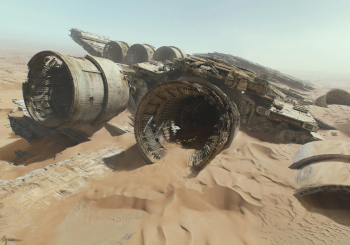
Even more importantly, the Western Reaches are the location of the planet Jakku, the location of the final large-scale engagement of the Galactic Civil War. The Emperor had discovered his servant, Gallius Rax, on the planet as a young boy and recruited him to ultimately carry out his contingency plan to destroy the Empire in the event of his death. Following the Battle of Jakku, Rax's efforts in service to Palpatine ultimately helped speed the collapse of the “Old Empire” and allowed Imperial Remnant forces to travel safely to the Outer Rim and establish the First Order. A generation later, Rey – a scavenger who would become a Jedi and hero of the Resistance – was discovered on Jakku.
Expansion Region
Located between the Inner Rim and the Mid Rim, the Expansion Region includes a few prominent worlds with some interesting history.
The technologically-advanced Umbarans call the Expansion Region home, though the region’s Ghost Nebula isolates the Umbara system within an occluding space cloud. Jedi Master Pong Krell was killed by his own troopers of the 501st Legion for the betrayal of the Old Republic during the battle of Umbara in 20 BBY.
In 0 BBY, a Rebel intel officer, Cassian Andor, visited the Ring of Kafrene, a trading outpost located in the region, to learn more about Imperial shipments of kyber crystals. There, he learned about the creation of a certain Imperial superweapon from a rebel informant.
During the Imperial era, most of the region was under the jurisdiction of the Galactic Empire. In 28 ABY, the Amaxine warriors, a First Order-funded military group, made their headquarters in the region on the planet Sibensko’s underwater city, a widely-known crime haven.
Mid Rim
In between the Expansion Region and the Outer Rim lie the systems of the Mid Rim, a region home to such notable worlds as Naboo, Bothawui and Kashyyyk. Naboo, of course, gave rise to such figures as Emperor Palpatine, Padme Amidala and Jar-Jar Binks. The Bothans of Bothawui were responsible for delivering intel about the Second Death Star to the Rebel Alliance, and the Wookiee Chewbacca of Kashyyyk became a hero of the same.
In its earliest history, the Mid Rim was the arena of a battle fought between the ancient Jedi and Sith on Takodana – a planet that would later become the residence of pirate queen Maz Kanata, who provided useful information to the Resistance during the time of the First Order. During the Clone Wars, the region became a theater of numerous battles when many of its worlds joined the Confederacy of Independent Systems, which broke away from the Old Republic on grounds of excessive taxation and corruption of the Senate.
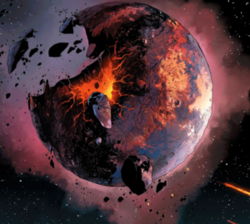
One of perhaps the most important sites in the Mid Rim is not a planet at all, but the moon of Jedha – which orbited NaJedha. Considered a holy site by those who honored the Force, Jedha had a rich reserve of kyber crystals, which were used by the Jedi in their lightsabers, but also by the Empire as components of the Imperial superlaser used in the Death Star during the Imperial occupation of the moon. The occupation provoked an insurgency to oppose the Empire, but ultimately, the moon’s Holy City was used as a test site for the superlaser its stripped resources had helped create.
Hutt Space
Located on the border of the Mid Rim and the Outer Rim, east to the Core Worlds, the Hutt Space was an autonomous region ruled by the Hutt Clan. It became widely known as a haven for residents of poor reputation in the Galaxy. It remained autonomous even during the Imperial Age thanks to its cooperation with the Imperial authorities. Only after the Battle of Yavin did the Empire attempt to gain more control over this territory.
The Hutt Space included worlds like Nal Hutta, Cyrkon and Toydaria. However, after the death of Jabba the Hutt, the region became a theater of conflict between the Hutts, who wished to carve up the territory between themselves.
Outer Rim
The largest region of the galaxy, the Outer Rim, is located far from the Core Worlds and far from the grip of the governments like the Galactic Republic. As a result, it lacks the centralized authority that might introduce and maintain order over its vast territories. The region has been known for piracy, as well as other illegal activities. Even large criminal organizations like the Hutt Clan and the Pyke Syndicate could operate in the Outer Rim and remain unpunished. Slavery, despite being banned by the Republic, is common in the Outer Rim. Anakin Skywalker, later known as Darth Vader, was a slave on the Outer Rim world of Tatooine.
The lawless nature of the region resulted in some worlds taking more drastic measures to protect themselves. For instance, Eriadu mounted the Outland Regions Security Force, which was only possible thanks to weapon dealers who ignored the Republic's ban on selling weapons to its member worlds, as there was no one to enforce the ban.
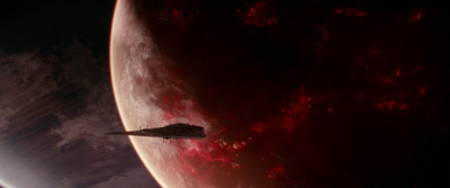
Despite its distance from the center of the galaxy, the Outer Rim saw significant events that affected the whole galaxy. The Sith homeworld of Moraband was located in the Outer Rim, itself the site of many ancient wars and the burial place of Sith Lords. The region was also the home of the Mandalorians on Mandalore and the final stage of the Clone Wars with the Outer Rim Sieges and the slaughter of the Separatist Council by Darth Vader on Mustafar. It was here that the Confederacy of the Independent Systems had its last strongholds conquered by the Empire, who later used the region as testing grounds for industrial plans and deadly weapons ranging from biological weapons to massive superweapons like the Death Star.
Battles over Endor, Hoth and Yavin took place in the region, and the Outer Rim world of Ajan Kloss was used during the time of the First Order as a base for the Resistance to launch its assault on Exegol.
Corporate Sector
Ruled by the Corporate Sector Authority, this sector is controlled by corporations. It is considered to be a paradise for tax evaders, arms merchants and pirates, being well-known for attracting war profiteers. Located in the Outer Rim, the Corporate Sector was initially a group of loosely allied worlds that remained independent from the Galactic Republic and mostly neutral during the Clone Wars. Later, the Empire managed to conquer the sector, despite the efforts of smugglers and mercenaries from all over the galaxy, including Saw Gerrera's Partisans.
After the fall of the Empire, the area was still ruled by the Corporate Sector Authority. Thirty years later, it was utilized by the First Order to bribe Erudo Ro-Kiintor, a senator of the New Republic. The war profiteers from the Corporate Sector delivered weaponry to both sides of the Cold War.
Unknown Regions
Beyond the Outer Rim, there are areas of the Galaxy that have scarcely been explored. There are so many disturbances – solar storms, rogue magnetospheres, black holes, gravity wells, even strange creatures – that it is extremely difficult to navigate through the labyrinth they create. Countless pilots have been killed in their attempts to make their way through the Unknown Regions, and others have returned crazed from the solitude.
Ancient computers at the Jakku Observatory are believed to have mapped the first safe route through the maze, an effort initiated by Emperor Palpatine and aided by Chiss Admiral Thrawn, a native of the Unknown Regions. During the Republic Era, the Chiss used Force-sensitive children to navigate the region, which they aptly called the Chaos.
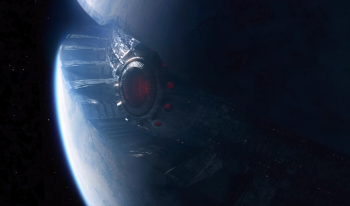
After the death of the Emperor and collapse of the Empire, Imperial remnants retreated into the Unknown Regions, where they established shipyards, weapon factories and base installations, until finally emerging as the First Order. Notably, the First Order occupied the planet Ilum, a hidden source of kyber crystals for the Jedi dating back to the Old Republic that was later mined by the Empire to power the Death Star’s superlaser. The First Order converted Ilum into its Starkiller Base, which destroyed the Hosnian System and the seat of the New Republic before it was ultimately destroyed by the Resistance.
The Unknown Regions also hid Luke Skywalker on the planet of Ahch-To and the Final Order on the Sith world of Exegol.
Wild Space
While the so-called Unknown Regions were largely unexplored, they were at least mapped. The same cannot be said of Wild Space. As a result, even the region’s most notable worlds were thought by some to be the stuff of fables.
Mortis, a mysterious realm hidden within Wild Space and believed by many to be the origin of the Force, could not be mapped or even accessed voluntarily. Those few who have been within its realm report that it seemed to exist outside of normal time and space.
The original homeworld of the Lasat, Lira San, was located in Wild Space, separated from the known galaxy by an imploded star cluster. The Outer Rim planet of Lasan was colonized by the Lasat and, eventually, the two populations lost contact with one another. After a time, Lira San was largely forgotten by the Lasat of Lasan and known to a few only as part of an ancient prophecy.
For the inhabitants and brave explorers of Wild Space, its mysteries and isolation had its advantages. Asajj Ventress hid the kidnapped son of Jabba Desilijic Tiure (a.k.a Jabba the Hutt) in an abandoned monastery on Teth, which had once been inhabited by the monks of the B’omarr Order. Cartographers like Auric and Rhyssa Graf were able to earn profit from mapping small portions of the region, and Eleodie Maracavanya, the “pirate ruler of Wild Space,” managed to create a pirate state out of the chaos after intercepting an Imperial Star Destroyer.
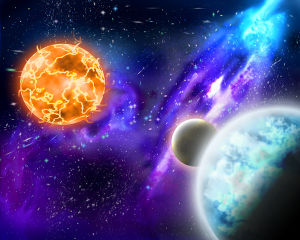
Dark Jedi Brotherhood
Our own Dark Jedi Brotherhood has its seat of power in the Arx System of Wild Space, hidden from the eyes of the galaxy and typically free to operate undisturbed. While the homeworlds of the Brotherhood’s Clans are spread out, the Dark Council, the Shadow Academy, the Atrophos Military Academy, the Iron Legion and much of the Brotherhood’s infrastructure are located on the planet Arx.
Please log in to take this course's exam